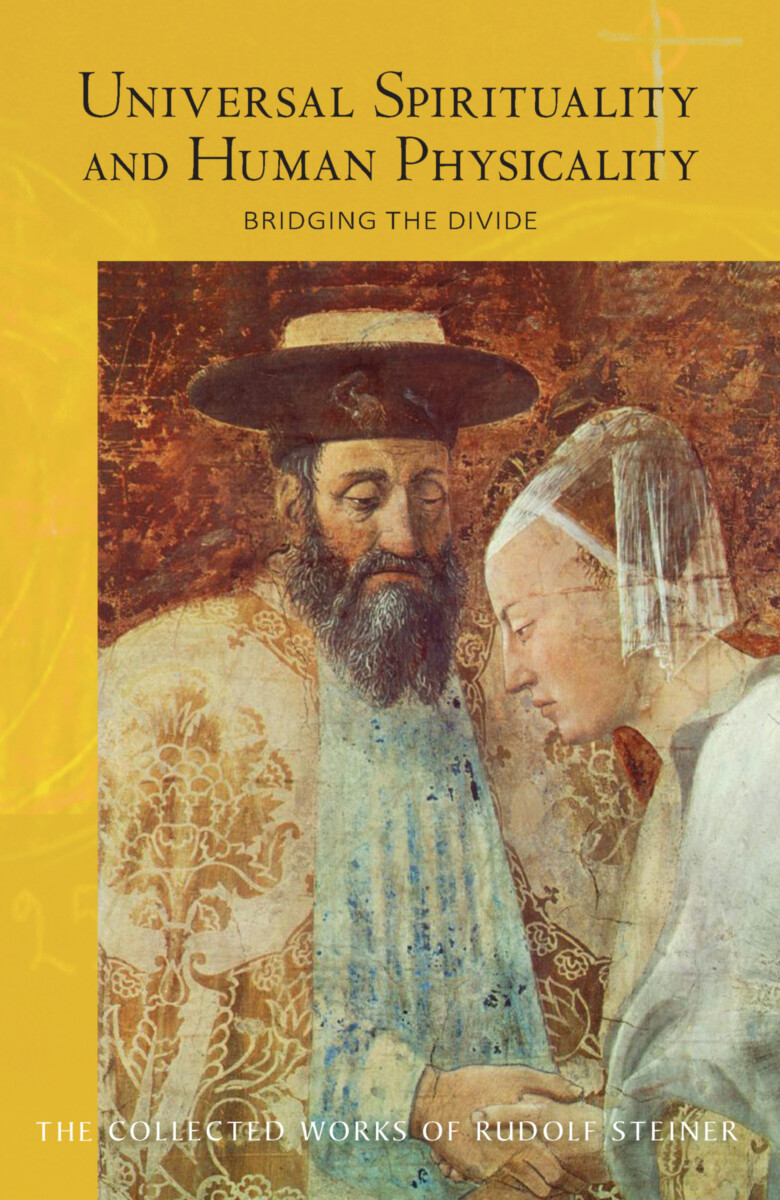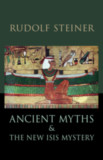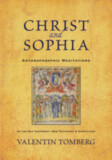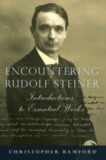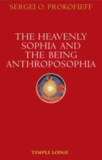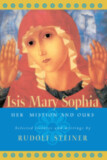Universal Spirituality and Human Physicality
Bridging the Divide: The Search for the New Isis and the Divine Sophia (CW 202)
- Publisher
Rudolf Steiner Press - Published
7th August 2014 - ISBN 9781855843981
- Language English
- Pages 280 pp.
- Size 6" x 9"
16 lectures, Dornach, Bern, Basel, November 26 – Dececember 26, 1920 (CW 202)
“Our contemporaries—who wish to keep to a narrow-minded and superficial outlook, are annoyed to find that spiritual science continually seeks the whole picture—that it has to create a bridge between the body and the soul, and truly explores how the psyche becomes corporeal and the body becomes psychological.”
How do the soul and the spirit live in human physical bodies? In our materialistic age, in which the very existence of the metaphysical is widely rejected, such questions are rarely posed let alone addressed. In this exceptional series of lectures, Rudolf Steiner speaks in scientific detail about the connection of the subtle aspects of human nature—our soul and spirit—to our physical constitution.
At the heart of this course are the well-loved “Bridge” lectures, which appear in English for the first time in their wider context. Steiner discusses the solid, fluid, air and warmth bodies, and how these are connected with the various ethers, the “I” and human blood. He goes on to describe how ideals and ideas impact the various aspects of the human constitution—how morality is a source of “world creativity”—with moral thinking imbuing life into substance and will. Moral ideas have a positive effect, he says, whereas theoretical ones have a negative impact. In the realm of the moral, a new natural world comes into being, and thus the moral order and the natural order are intertwined.
This volume also features Steiner’s classic lecture on the Isis legend and its renewal today as divine wisdom—Sophia. Other themes include the mystery of Christ as the connection between the spiritual and physical Sun; the permeation of the life of thought with will (love) and permeation of the life of will with thoughts (wisdom); the path to freedom and love and their importance in the universe; the metamorphosis of head and limbs through successive lives on earth; the threefold nature of the human form (head, thorax, limbs), the threefold nature of the soul (thinking, feeling, will) and the threefold nature of the spirit (waking, dreaming, sleeping).
This volume is a translation from German of Der Mensch in Zusammenhang mit dem Kosmos 2: Die Brücke zwischen der Weltgeistigkeit und dem Physischen des Menschen. Die Suche nach der neuen Isis, der göttlichen Sophia (GA 202).
CONTENTS AND SYNOPSES:
Introduction by Matthew Barton
1. Nov. 26, 1920. Creation of the human form from the interplay of cosmic and earthly forces—head organism, limb organism. Rhythmic organism—beauty, wisdom, vigor—metamorphosis of head and limbs through successive lives on Earth—spiritual science strives for unity of religion, art, and science.
2. Nov. 27, 1920. The threefold human being of body, soul, and spirit in relation to cosmic evolution and the life of society. Threefold nature of the human form (head, thorax, limbs)—threefold nature of the soul (thinking, feeling, will)—threefold nature of spirit (waking, dreaming, sleeping): these correspond to beauty, wisdom, vigor; to spiritual/cultural life, right life, economic life; and to freedom, equality, fraternity.
3. Nov. 28, 1920. The luciferization of pre-Christian culture and the ahrimanization of contemporary civilization. Overcoming this by developing Imagination, Inspiration, Intuition. The cosmos in beauty, the planet in vigor, the balance in wisdom. Ahrimanic contamination of the world since the mid-nineteenth century and the development of mechanical power.
4. Dec. 4, 1920. Hegel and Schopenhauer; world thought and world will. The thought element points us back to previous times, the will element forward into the future—the West, the materialization of thought; the East, the spiritualization of will. Hagel: idealization of the thought, Schopenhauer as riddle of European civilization. Dying of cosmic thought and dawning of human thought; the human being as creative element in the cosmos.
5. Dec. 5, 1920. Hegel and Schopenhauer—thought as metamorphosis of limb activity in the previous life; thought element as light in Imagination, Inspiration, Intuition. Dying of previous world in thoughts, gleaming beauty. Clairvoyant experience of the will as substance, darkness; dawning of future in darkness; warmth side of the light spectrum (red) connected with the past, chemical side (blue) with the future.
6. Dec. 10, 1920. Connection between the natural order and the realm of morality and soul. Chasm between science and religion. Spiritual science as the bridge between physical and moral worldviews. Light as dying world of thoughts. Life in light and weight. Moralizing the physical by spiritualizing concepts. The Cassini curve.
7. Dec. 11, 1920. Natural order and moral world order and their metamorphosis in birth and death through love and freedom. Relationship between human soul-spirit nature and physical corporeality. Being free means being able to die; loving means being able to live. One-sided understanding of the soul and spirit in the east, and of the physical body in the West. Adam Smith—the human being as economic mechanism with economic freedom.
8. Dec. 12, 1920. Modern historical research modeled on science. Migration of souls through cultures as they pass through incarnations. Only a few souls from early Christian centuries are among European populations. Many former Native American souls in the population of Western Europe. Many souls from early Christian centuries in Asia. Eastern souls from pre-Christian times in America. Anthroposophy should replace anthropology.
9. Dec. 14, 1920. Progress of souls through successive Earth lives. Thinking capacity, will organization, rhythmic system. Old and new methods of initiation. Ancient East: consciousness of the breathing process; today, resting in thoughts. The nationality principle (Wilson).
10. Dec. 17, 1920. How do soul and spirit live in our physical body? Body of fluids, body of air, body of warmth. The diverse levels (bodies) of the human being and the ether types—thought and tone—“I” and blood circulation—Imagination, Inspiration, Intuition. Lack of a connecting bride in modern perspectives between the physical body and the human soul and spirit.
11. Dec. 18, 1920. Morality as source of world creativity. The positive effect of moral ideas, negative effect of theoretical ideas. Substance and energy die away; moral thinking enlivens materiality. Copernican system devoid of spirit. Kepler, Newton. The mystery of Christ is the connection between the spiritual sun and the physical sun.
12. Dec. 19, 1920. The human being as observing, acting, feeling entity. Connection between thought and will. Pure thinking: permeating the life of thought with will. Love: permeating the life of will with thoughts. Appearance, force, wisdom. The path of freedom and love and their importance in the universe.
13. Dec. 23, 1920. The Christmas Mystery—the Christmas tree as symbol of the tree of paradise. What developed from the piety of the shepherds and the primordial, sacred star wisdom of the magi.
14. Dec. 24, 1920. The connection between the sun mystery and the Christ mystery. The Isis legend and its renewal today. The divine wisdom Sophia.
15. Dec. 25, 1920. The secrets of the starry heavens and the human interior. Transformation of ancient modes of perception into our modern science and mechanical and mathematical worldview. A new form of cognition and a new will must arise in all areas of life. The need for a threefold social organism.
16. Dec. 26, 1920. Knowledge of the shepherds and the magi. Mathematical and mechanical views must again unfold to become Imagination; scientific knowledge of nature must be broadened through Inspiration. The birth of fully engaged endeavor as the Christmas mood.
NotesRudolf Steiner’s Collected Works
Significant Events in the Life of Rudolf Steiner
Color Plates
Rudolf Steiner
Rudolf Steiner (b. Rudolf Joseph Lorenz Steiner, 1861–1925) was born in the small village of Kraljevec, Austro-Hungarian Empire (now in Croatia), where he grew up. As a young man, he lived in Weimar and Berlin, where he became a well-published scientific, literary, and philosophical scholar, known especially for his work with Goethe’s scientific writings. Steiner termed his spiritual philosophy anthroposophy, meaning “wisdom of the human being.” As an exceptionally developed seer, he based his work on direct knowledge and perception of spiritual dimensions. He initiated a modern, universal “spiritual science” that is accessible to anyone willing to exercise clear and unbiased thinking. From his spiritual investigations, Steiner provided suggestions for the renewal of numerous activities, including education (general and for special needs), agriculture, medicine, economics, architecture, science, philosophy, Christianity, and the arts. There are currently thousands of schools, clinics, farms, and initiatives in other fields that involve practical work based on the principles Steiner developed. His many published works feature his research into the spiritual nature of human beings, the evolution of the world and humanity, and methods for personal development. He wrote some thirty books and delivered more than six thousand lectures throughout much of Europe. In 1924, Steiner founded the General Anthroposophical Society, which today has branches around the world.


